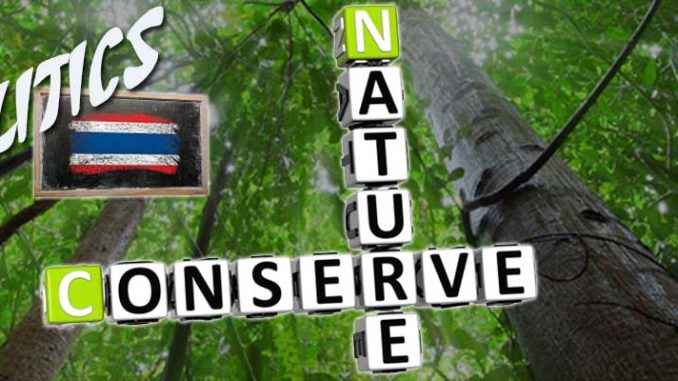
This paper argues that “nature conservation” in Thailand is the product of state intervention in natural landscapes and the view that forests are crucial to the country’s modernization. The adoption of North American wilderness thinking by the modernizing Thai state has resulted in ambivalence between “nature conservation” and “economic development.” Though meant to be a wilderness free from human intervention, “protected areas” are integral to the capitalization of natural resources within the “development” paradigm.
Nineteenth-century British colonial logging interests intruding from Burma began the displacement of the premodern notion of pa (forest) as a mysterious, disorderly realm peripheral to and distinct from the civilized sphere of muang (city). In its place came the term pa mai (forest-wood); “nature” become “natural resources” with its utilitarian focus on commercial value. Forestry science, initally represented by foreign experts, transformed the disorderly, chaotic forest into a rationally ordered arrangement of trees. This also enabled the Thai state, specifically the Royal Forestry Department, to develop new technologies of control—state-supervised teak logging, mono-species management, and centralization through railroad development.
Just as colonial-era logging shaped a commercial view of Thai nature, post-colonial international institutions emerged to transfer the development model and the national parks model from industrialized to underdeveloped countries. Always available for the needs of private industry and tourism, the parks have also become national symbols of a modern, civilized Thai nation-state. State officials, forestry technocrats, and conservation groups promote and protect “national parks” and “wildlife sanctuaries” for the aesthetic, educational, and recreational needs of the urban, educated middle class.
The pre-requisite of formal education to properly appreciate nature has been used to exclude local villagers and hill tribes from national park management and to undermine their pre-existing connection between local livelihood and the forest. In the interests of “unspoiled nature,” they are pushed out of protected areas and into surrounding forest over which they have no community rights. These areas open to use by state and private interests, while the residents themselves are declared a perilous “threat” to the natural forest, destroyers of the nation itself.
Pinkaew Laungaramsri
Read the full unabridged article HERE
Kyoto Review of Southeast Asia. Issue 2 (October 2002). Disaster and Rehabilitation

